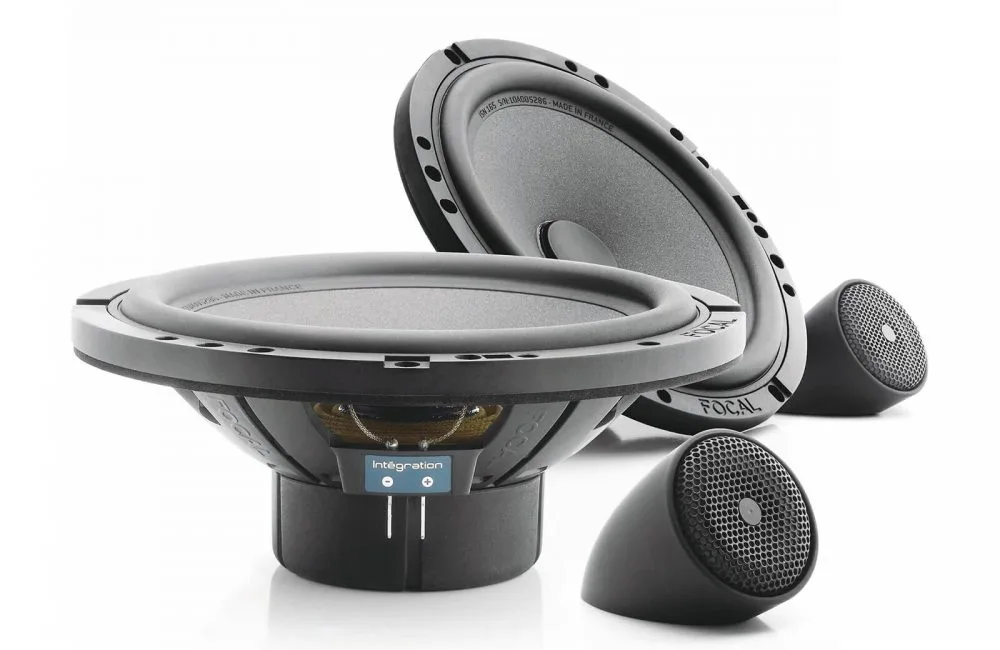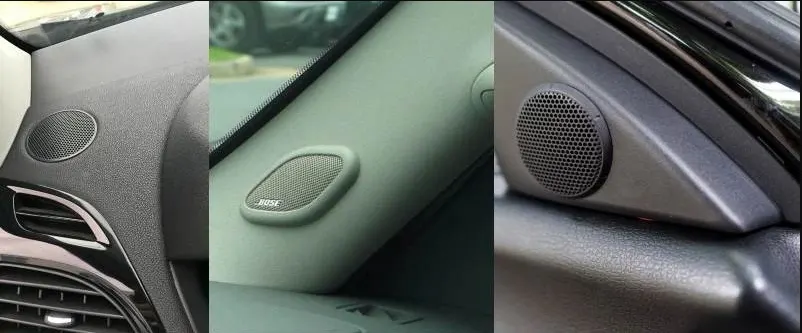When you’re buying a new home theater system, a soundbar, or even looking for a new car, you have likely heard the words: tweeter, woofer, subwoofer, and midrange without really knowing what that means.
Every sound you hear has a given frequency. Typically the human hearing range is from 20 Hz to 20,000 Hz, which you may think is an extensive range, as seen in the equalizer profile settings. Indeed it is. That’s why there are several types of speakers. A tweeter speaker is designed to reproduce high audio frequencies, typically around 2,000 to 20,000 Hz (2KHz to 20KHz).

How does a speaker work?
Traditional speakers produce sound using an electromagnet to move a flexible cone back and forth. They use drivers to help translate electrical signals into physical vibrations so that you can hear recorded sounds. Tweeters are one of the three main speaker types.
What is a tweeter, and why is it important?
Any recording is a complex combination of tones, frequencies, and other characteristics. Music is made by various instruments, the voice of singers, and items added when music is recorded. Without tweeters, you will neglect a crisp and well-detailed sound to your ears. I’m sure you want a better experience, not a bad one.
How can I tell apart a tweeter?
One notable difference between a tweeter and the other types of speakers is their size. Thus it will be effortless to identify a tweeter.
- Tweeter: The smallest of all, they are even somewhat cute.
- Midrange: loyal to its name, they are mid-size.
- Subwoofer: The biggest of all, sometimes, they can be heavy.

Why are tweeters so small?
The size of the tweeter dictates the frequency because to make higher frequency waves, 2KHz to 20KHz. The diaphragm has to vibrate faster. It’s too hard for a large driver to vibrate fast enough to create the sounds of a tweeter.
What happens if a tweeter reproduces low frequencies?
Don’t worry because most modern sound systems include filters (also called crossovers) that block any sound from the high-frequency range—avoiding distortion and damage to your tweeters.
Materials used in tweeters
Many materials are being used for tweeters, from textiles to metal. Even though metal dome tweeters look cooler than textiles, that doesn’t mean they are better. A well-engineered tweeter should outperform a poor-engineered one, even if it uses fancy materials like titanium and aluminum.
Below are some of the most common materials used for tweeters:
- Silk, textiles, and other fabrics
- Mylar or other plastics
- Metal-coated plastics
- Metals: aluminum, titanium, and alloys
- Ceramics and ceramic-coated
Silk and textile are some of the most common materials used in soft dome tweeters. Titanium and other metals like aluminum are standard for mid-to-upper price range tweeters. It’s essential to check all the specifications and the frequency response since nice materials could be deceiving.
Tweeters in your car
Since tweeters are tiny, they can easily fit within your car. They’re continuously used in addition to other speakers like woofers to give passengers a fuller audio experience.
In cars, they’re often mounted higher in the vehicle and more closely pointed to the heads of the listeners. This is because tweeters are directional, unlike woofers. Usually, there are three prevalent positions where you can find tweeters inside a car:
- Dashboard: facing the windshield and located to the right and left of the dashboard.
- Pillar: In the pillar that holds your windshield and roof.
- Doors: In the upper part of the door, facing the mirrors.

Other specifications for tweeters
For the tech-savvies, here are some specifications related to the tweeters. Power ratings of 15W RMS are realistic. In premium sound systems, a tweeter could draw 25W-35W. Tweeters must match the rated impedance expected from an amplifier. A 6-ohm impedance would be unusual. Typically rated impedance is either 4 ohms or 8 ohms.
As for efficiency, sensitivity, or SPL, for average tweeters, you might expect this between 89dB to 91dB at 1W/1m. Remember that there are 2 types of tests for SPL, 1W/1m or 2.83V/1m, which could be confusing.
Anything else I should know about tweeters?
Yes, a few more things. Sometimes tweeters could be called trebles. The name is derived from the high-pitched sounds of some birds (Tweets). Finally, It’s important to note that mids and woofers cannot reproduce high frequencies. Nevertheless, they will take care of any frequency below 2KHz. We’ll talk about woofers in a future article. See you soon!